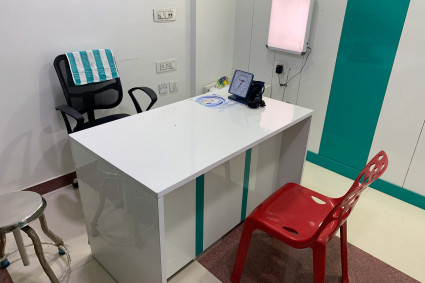
Now that MIPS 2021 submissions have been completed, attention should turn to the MIPS 2022criteria. CMS provided MIPS-eligible doctors with relief options for the 2021 reporting year owing to COVID-19. A lot of people anticipate further eastings for the MIPS 2022 performance year. However, other than the creation of a new Improvement Activity, CMS has not yet made any announcements in this regard. Although we can make reasonable assumptions, there is no way to be certain until the CMS notifies us of the changes. Therefore, let's quickly review the present requirements.
Weights for Performance Categories in 2022: Unchanged
All of the performance category weights from 20 are still in effect. Over the coming years, CMS has suggested that it will progressively continue to shift more weight from the Quality category to the Cost category until both categories have an equal weight of 30%.
Quality- 45%
PI -25.png
IA -15
COST – 15
The complete calendar year continues to be the Quality Category Reporting Period (Jan 1, 2020 - Dec 31, 2022)
Data completeness (the proportion of patients who meet the criteria for each quality metric) must increase to 70% by 20202 from 60% in 2021.
Case minimums continue to be 20.
Six metrics, one of which must be an outcome or high priority measure, must still be reported by the majority of practices.
Finding out if the standard for a specific Quality measure has changed from 2021 is crucial. The performance rate from last year might not get the same grade this time around.
To report the necessary number of measures, clinicians might use a variety of Collection Types. These include CMS Web Interface measurements, claims, eCQMs, MIPS CQMs, QCDR measures, CAHPS for MIPS survey, and others.
Speech-language pathology, audiology, clinical social work, chiropractic medicine, pulmonology, nutrition/dietician, and endocrinology are some of the new specialty measure sets that have been included.
PI Category: Promoting Interoperability
· The reporting period is at least 90 days long (no change here)
· Still, four objectives are used to group the measures. Each goal is necessary. To receive any credit in the PI category, you must report on all the necessary metrics for all the objectives or make an exclusion claim (as appropriate). Points are transferred from one measure or target to another if the exclusion is requested for one or more of the measures.
Only the Prescription Drug Monitoring Program (PDMP) measure, which needs a yes/no response, is now eligible for extra points for e-Prescribing (e-Rx). The measure to verify opioid treatment agreements was dropped.
o Exchange of Health Information
o Patient to Provider Exchange
· Exchange of Clinical and Public Health Data
Two measures that do not have any exceptions, just like in 2019. The PI category score would be ZERO if the data for these two measurements were not provided:
o a security risk assessment
o Access the patient portal for patients (at least 1 patient)
If less than 75% of the group's clinicians meet the criteria for a hospital-based individual MIPS-eligible clinician (as opposed to 100% for the 2019 MIPS performance year), the PI category will be automatically re-weighted to the Quality category for hospital-based groups.
Enhancement Projects (IA) Category
The reporting period continues to be a minimum of 90 days (no change here)
Group Reporting: Only one clinician from the group had to submit a report in 2019 because only 50% of the providers had to take part in the chosen Improvement Activities for the same 90-day period.
IA Measures that Have Changed Since the 2019 IA Measures Inventory:
- 15 were eliminated.
- 7 have undergone changes
- There have been added 2 new measures.
A new improvement activity has been introduced that is applicable to the doctors and teams taking part in a clinical trial related to COVID-19.
Pricing Category
Reporting is for the entire calendar year (Jan 1, 2020 - Dec 31, 2020)
CMS will be responsible for reporting the cost data. No submission is necessary.
Medicare Spending Per Beneficiary Clinician (MSPB-C) and Total Per Capita Cost are two current indicators that have been changed (TPCC).
TPCC evaluation (Revised) Measurement by MSPB-C (MSPB Clinician) (Name and specification Revised)
The addition of 10 new episode-based metrics to the currently 8 measures is suggested. Case minimums and measure attribution for both the old and new episode-based measures are left unaltered:
1. New Inpatient Dialysis Is Required Due to An Acute Kidney Injury
2. Primary Hip Arthroplasty Done Electively
3. Repair of an inguinal or femoral hernia
4. Creating Hemodialysis Access
5. Inpatient Exacerbation of Chronic Obstructive Pulmonary Disease (COPD)
6. A lower intestinal bleeding
Scoring Based on Facilities
The facility-based MIPS-eligible physicians and groups will have access to this scoring option for the performance categories of Cost and Quality. Since 2021, when this scoring option first became available, the definition, decision, and scoring policies have not changed. For their MIPS score, participating doctors will still need to submit the information for the PI and IA categories. The fact that facility-based doctors CAN submit Quality Measures data along with IA and PI data is remarkable. If they do, the information that results in the clinicians' highest MIPS score will be used.
Relevant Lessons
Don't slow down your MIPS efforts in anticipation of potential CMS relaxations. It might not be what you expected, which, in the best-case scenario, could mean lost time and momentum. You should pay close attention if your business employs a sizable number of doctors who met the eligibility requirements in 2021 as they will be expected to submit reports for MIPS in 2020. The My Mips Score team is available to assist you with your MIPS 2020 plan.





